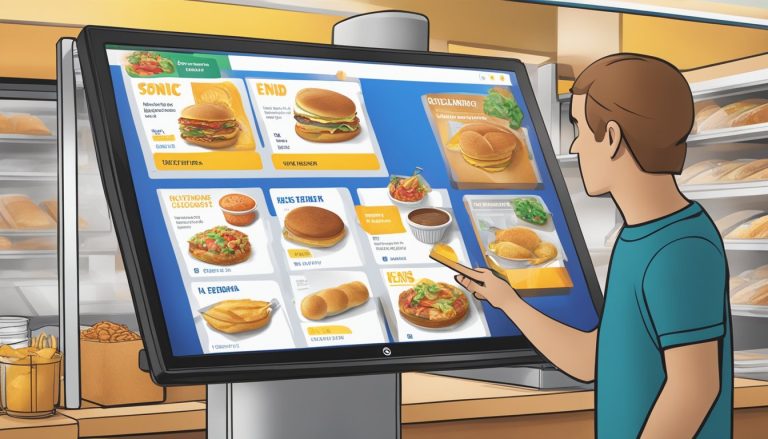Drive-in restaurants face unique challenges when it comes to maintaining breakfast quality. The fast-paced environment, combined with the need for consistency across multiple locations, creates a complex set of obstacles for managers and staff to overcome.
Delivering high-quality breakfast items in a drive-in setting requires meticulous planning, standardized processes, and well-trained employees. Restaurants must balance the demands of quick service with the expectation of fresh, hot food. This balancing act becomes even more critical during peak breakfast hours when customer volume is at its highest.
The restaurant industry has long recognized the importance of breakfast as a key revenue driver. For drive-in establishments, mastering the art of consistent breakfast quality can lead to increased customer loyalty and positive word-of-mouth. However, achieving this consistency across different locations and varying breakfast hours presents ongoing challenges that require constant attention and innovation.
The Importance of Breakfast in the Fast Food Industry

Breakfast has become a crucial battleground for fast food chains, driving revenue and shaping consumer loyalty. Fast food companies are investing heavily in morning offerings to capture market share and meet evolving customer preferences.
Market Share and Consumer Behavior
Fast food breakfast sales have seen significant growth in recent years. According to industry research, the morning daypart accounts for a substantial portion of quick service restaurant (QSR) revenue. Many chains report that breakfast contributes 20-25% of their total sales.
Consumer behavior trends show a preference for convenient, on-the-go breakfast options. Time-pressed customers often seek quick, portable meals to start their day. This demand has led to innovative menu items like breakfast sandwiches, wraps, and handheld options.
Market research indicates that breakfast customers tend to be more loyal. They often establish routines, visiting the same restaurants regularly. This loyalty makes breakfast a key focus for fast food chains aiming to build a consistent customer base.
Comparing Breakfast Offerings of Major Players
McDonald’s remains a dominant force in fast food breakfast. Their Egg McMuffin, introduced in 1971, revolutionized the industry. The chain’s all-day breakfast launch in 2015 further solidified its position, challenging traditional mealtime norms.
| Chain | Signature Breakfast Item | Year Introduced |
|---|---|---|
| McDonald’s | Egg McMuffin | 1971 |
| Chick-fil-A | Chicken Biscuit | 1986 |
| Taco Bell | Breakfast Crunchwrap | 2014 |
Chick-fil-A has influenced the breakfast landscape with its chicken-based items. The chain’s focus on quality ingredients has raised the bar for competitors. Other QSRs have responded by introducing similar offerings and emphasizing ingredient quality.
Taco Bell entered the breakfast market in 2014 with unique items like the Breakfast Crunchwrap. This move exemplifies how chains are differentiating themselves through innovative menu options tailored to their brand identity.
Challenges Specific to Drive-In Settings

Drive-in restaurants face unique obstacles in delivering consistent breakfast quality. The fast-paced environment and physical limitations of serving customers in their vehicles present distinct hurdles for maintaining food standards and customer satisfaction.
Optimizing Drive-Thru Experience
Drive-thru lanes require precise timing and coordination to function smoothly. Order accuracy is crucial, as mistakes are harder to rectify once customers have left the premises. Clear communication systems are essential to prevent misunderstandings between staff and patrons.
Menu boards must be easily readable from vehicles, with concise descriptions to facilitate quick decision-making. Payment processes need to be efficient and secure. Weather protection for both staff and customers is necessary to ensure comfort and safety year-round.
Packaging plays a vital role in preserving food quality during transit. Containers must keep items at proper temperatures and prevent spillage. Drive-thru window design should allow for easy handoffs while maintaining food integrity.
Maintaining Service Quality at Peak Hours
Breakfast rush hours put significant strain on drive-in operations. High volume periods require strategic staffing to handle increased customer flow without compromising service quality. Cross-trained employees can adapt to different roles as needed, improving overall efficiency.
Queue management becomes critical during busy times. Implementing effective systems to direct traffic and reduce wait times is essential. Mobile ordering options can help streamline the process by allowing customers to place orders in advance.
Kitchen operations must be optimized for speed without sacrificing food quality. Prep work and cooking procedures should be designed to handle sudden spikes in demand. Maintaining consistent product standards under pressure is a key challenge for drive-in breakfast services.
Staff training is crucial for handling peak hours effectively. Employees need to work quickly and accurately while maintaining a positive attitude. Regular quality checks and feedback systems help ensure service standards are met even during the busiest periods.
Ensuring Consistency and Quality of Breakfast Items

Drive-in restaurants face unique challenges in maintaining breakfast quality. Standardized procedures and rigorous quality controls are essential to deliver consistent, high-quality meals to customers on the go.
Standardizing Recipes and Preparation Methods
Standardized recipes form the foundation of consistent breakfast offerings. Drive-ins must develop precise ingredient lists and cooking instructions for each menu item. Staff training is crucial to ensure proper execution of these recipes.
Portion control tools, such as pre-measured scoops or containers, help maintain consistency in ingredient quantities. Automated cooking equipment, like programmable griddles or toasters, can ensure uniform cooking times and temperatures across different locations.
Prep work is often done in advance to streamline morning operations. This includes pre-portioning ingredients, pre-cooking certain items, and setting up workstations for efficient assembly.
Quality Checks and Compliance
Regular quality checks are vital to maintain food standards. Managers should conduct daily taste tests and visual inspections of breakfast items. This helps identify any deviations from established quality benchmarks.
Temperature monitoring is critical for food safety and quality. Staff must regularly check and log temperatures of hot and cold items. Drive-ins should use calibrated thermometers and implement a HACCP (Hazard Analysis Critical Control Point) system.
Mystery shopper programs can provide valuable insights into the customer experience. These unannounced visits help assess food quality, service speed, and overall consistency across different locations.
Compliance audits ensure adherence to company standards and local health regulations. Regular internal audits, coupled with external health inspections, help maintain high quality and safety standards in drive-in breakfast operations.
Leveraging Technology for Operational Excellence

Drive-in restaurants can harness technology to enhance breakfast quality and streamline operations. Digital systems and data-driven tools offer powerful ways to improve efficiency and consistency across locations.
Implementing Digital Ordering Systems
Digital ordering systems revolutionize the drive-in breakfast experience. Touchscreen kiosks and mobile apps allow customers to place orders quickly and accurately. These systems reduce errors and improve order fulfillment speed.
Digital menu boards display items clearly and can be updated instantly across multiple locations. They showcase promotions and adjust pricing in real-time based on inventory or demand.
Integration with kitchen management systems ensures orders are routed efficiently to prep stations. This minimizes delays and keeps food fresh.
Real-time Analytics and AI in Quality Control
Real-time analytics provide valuable insights into breakfast operations. Managers can track key metrics like order times, customer wait periods, and food waste. This data helps identify bottlenecks and optimize processes.
AI-powered quality control systems use computer vision to monitor food preparation. They can detect inconsistencies in portion sizes or cooking times, alerting staff to potential issues.
Predictive analytics forecast customer demand, enabling better inventory management. This reduces food waste and ensures popular items remain in stock during peak hours.
Temperature sensors and smart equipment provide constant monitoring of food safety parameters. Automated alerts notify staff of any deviations, maintaining consistent quality across all breakfast items.
Customer-Centric Strategies for Drive-In Restaurants

Drive-in restaurants can enhance their breakfast service by implementing customer-focused approaches. These strategies aim to improve satisfaction, build loyalty, and create personalized experiences for patrons.
Customer Feedback and Engagement
Drive-in restaurants should actively seek customer input to refine their breakfast offerings. Implementing digital surveys after each visit allows for quick and easy feedback collection. Staff can encourage participation by mentioning the survey during order pickup.
Creating a dedicated mobile app enables customers to provide real-time comments and suggestions. This direct line of communication helps restaurants address issues promptly and make data-driven menu adjustments.
Social media platforms offer another avenue for engagement. Restaurants can host polls, ask for menu suggestions, and respond to customer comments. This interaction builds a sense of community and shows that the restaurant values customer opinions.
Loyalty Programs and Personalized Marketing
A well-designed loyalty program can significantly boost customer retention at drive-in restaurants. Points-based systems, where customers earn rewards for frequent visits, encourage repeat business. Offering exclusive breakfast deals to loyalty members creates a sense of value.
Personalized marketing enhances the customer experience. Using data from previous orders, restaurants can send targeted promotions for favorite breakfast items. Birthday rewards and special occasion discounts make customers feel appreciated.
Mobile apps can facilitate personalized ordering. Saving customer preferences and past orders streamlines the drive-in experience. Push notifications about new breakfast items or limited-time offers keep customers engaged and informed.
Inventory and Supply Chain Management

Effective inventory and supply chain management is crucial for maintaining breakfast quality in a drive-in setting. It requires balancing efficient sourcing, proper storage, and adapting to local preferences while leveraging economies of scale.
Effective Ingredient Sourcing and Storage
Drive-ins must establish reliable supplier relationships to ensure consistent ingredient quality. Sourcing fresh produce, dairy, and meats from local vendors can enhance flavor and support sustainability efforts.
Proper storage is essential to maintain ingredient freshness. Implementing a first-in-first-out (FIFO) system helps minimize food waste. Temperature-controlled storage areas prevent spoilage and extend shelf life.
Inventory management software can track stock levels in real-time, automating reorder points to prevent shortages. This technology also aids in forecasting demand based on historical data and seasonal trends.
Balancing Economies of Scale with Local Tastes
Drive-in chains can leverage bulk purchasing power to reduce costs. However, adapting menus to regional preferences is equally important for customer satisfaction.
Creating a core menu of staple items allows for standardized ordering and preparation across locations. Supplementing this with locally-inspired specials caters to diverse tastes.
Partnering with regional suppliers for specialty ingredients can enhance menu variety while supporting local economies. This approach may increase costs but can boost customer loyalty and differentiate the brand.
Implementing a centralized procurement system with flexibility for local sourcing strikes a balance between efficiency and customization. Regular menu analysis helps optimize inventory based on item popularity and profitability.
The Role of Employees and Training Programs

Employees are the backbone of successful breakfast service in drive-in settings. Their skills, knowledge, and motivation directly impact food quality and customer satisfaction. Effective training programs and strong leadership are crucial for maintaining high standards.
Establishing Effective Training and Service Standards
Drive-in restaurants must implement comprehensive training programs to ensure consistent breakfast quality. These programs should cover food preparation techniques, hygiene practices, and customer service skills. Employees need to master efficient workflows to handle peak morning rush periods.
Standard operating procedures (SOPs) provide a framework for maintaining quality across all locations. Detailed guidelines for food assembly, packaging, and order accuracy help staff deliver a uniform dining experience. Regular refresher courses keep employees up-to-date on menu changes and best practices.
Hands-on training, coupled with online learning modules, can effectively prepare staff for the demands of breakfast service. Simulated drive-thru scenarios allow employees to practice order-taking and multitasking skills in a controlled environment.
Leadership and Staff Motivation
Strong leadership is essential for maintaining high-quality breakfast service in drive-in settings. Managers play a key role in setting expectations, providing feedback, and fostering a culture of excellence. They must lead by example, demonstrating the importance of adhering to service standards.
Effective leaders motivate staff by recognizing and rewarding outstanding performance. Employee incentive programs, such as “Employee of the Month” awards or performance-based bonuses, can boost morale and encourage consistent quality.
Regular team meetings provide opportunities to address challenges, share best practices, and reinforce the importance of breakfast quality. Leaders should actively seek employee feedback to identify areas for improvement in processes or training.
Creating a positive work environment helps reduce turnover and maintain a skilled workforce. This stability is crucial for delivering consistent breakfast experiences to drive-in customers.
Adapting to Changing Market Conditions

Drive-in breakfast establishments must stay attuned to evolving consumer preferences and market trends. Successful adaptation requires thorough analysis and innovative menu offerings.
Analyzing Trends in Consumer Preferences
Market research plays a crucial role in identifying shifting consumer tastes. Drive-in restaurants can utilize surveys, social media analytics, and sales data to gauge customer preferences.
Health-conscious options have gained popularity in recent years. Many consumers now seek nutritious breakfast choices with lower calorie counts and higher protein content.
Convenience remains a top priority for drive-in customers. Restaurants can streamline ordering processes through mobile apps and digital menus to enhance the breakfast experience.
Sustainability has become increasingly important to consumers. Drive-ins can appeal to environmentally conscious customers by sourcing local ingredients and using eco-friendly packaging.
Innovative Breakfast Menus and Experiential Opportunities
Drive-in establishments can differentiate themselves by offering unique breakfast items. Fusion cuisines that blend traditional breakfast fare with international flavors can attract adventurous eaters.
Customization options allow customers to tailor their meals. Build-your-own breakfast bowls or sandwiches cater to individual preferences and dietary restrictions.
Limited-time offers and seasonal specials create excitement and encourage repeat visits. Pumpkin spice-flavored items in fall or refreshing fruit smoothies in summer can boost sales.
Drive-ins can enhance the breakfast experience through themed events or promotions. “Breakfast for Dinner” nights or “Pajama Day” discounts add a fun element to the dining experience.
Technology integration, such as interactive ordering kiosks or augmented reality menus, can create a futuristic breakfast experience that appeals to tech-savvy customers.
Future of Drive-In Restaurants

Drive-in restaurants are poised for innovation and adaptation in the coming years. New technologies and service models will reshape the drive-in experience, enhancing convenience and efficiency for customers.
Integration of Digital Signage and Interactive Menus
Digital signage and interactive menus are transforming drive-in ordering. Large, weather-resistant displays now show high-resolution images of menu items, with real-time updates on availability and pricing. QR codes enable customers to access detailed nutritional information and customize orders from their smartphones.
Generative AI is being integrated to provide personalized menu recommendations based on previous orders and dietary preferences. This technology can suggest complementary items and help upsell premium options.
Voice-activated ordering systems are becoming more prevalent, allowing hands-free interactions for added safety and convenience while in vehicles.
Drive-In as Part of Multichannel Food Service
Drive-ins are evolving into versatile hubs within broader multichannel food service strategies. Many establishments now offer hybrid experiences, combining traditional drive-in service with curbside pickup and delivery options.
Mobile apps enable customers to pre-order meals for specific pickup times, reducing wait times and improving order accuracy. Some drive-ins have introduced dedicated lanes for app orders, streamlining the process further.
Data-driven marketing efforts target customers with tailored promotions based on their ordering habits and preferences. This personalized approach helps drive repeat business and increases average order values.
Loyalty programs now span across all service channels, rewarding customers whether they use the drive-in, dine-in, or delivery options. This integration encourages customers to engage with the brand through multiple touchpoints.




